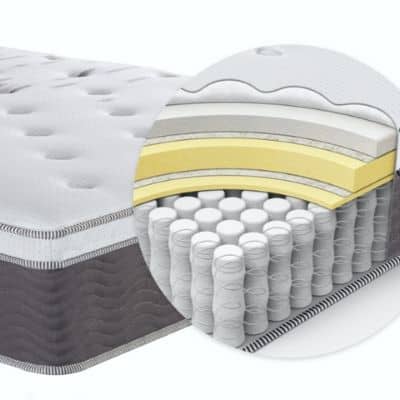
How do you sleep after a facelift?
A facelift is a cosmetic procedure that lifts up and pulls back the skin on the face to make it look smoother and tighter.
The procedure is designed to reduce any flab or sagging skin around the lower half of the face and neck, and is usually carried out under a general anesthetic.
Topics covered on this page
Typically, the procedure can last between 2-3 hours, and recovery can often take between 2-4 weeks, depending on what you had done and your circumstance.
You will likely have a swollen face after surgery, and in order to aid in recovery and reduce swelling after facelift procedures, it is important that you take time off work, you do not drive, and you avoid showering and getting your facelift bandage wet.
So, what about sleep?
You may be wondering how you are meant to sleep following your facelift surgery. Post-operative care is essential to reduce swelling after plastic surgery and ensure your skin can heal properly, to reduce any potential complications which can include infection or further swelling.
This article will, therefore, aim to cover the following topics to provide you with a greater understanding of what to do after you have had a facelift:
- How should you sleep after a facelift?
- When can you wash your hair after a facelift?
- How long does it take to look normal after a facelift?
- How can I speed up healing after a facelift?
- How painful is facelift recovery?
How should I sleep after a facelift?
Sleep and rest are essential to your facelift recovery, but you might be wondering what sleeping position to adopt at first, which is both comfortable and most beneficial to help you see results sooner rather than later.
You should use a firm mattress that provides support to your back to allow a quality night’s sleep that will aid in cell regeneration, curb inflammation and improve the blood flow to your tissue which can reduce incision scarring.
If you sleep on your front or side, then you should try to adjust to back sleeping. Back sleeping is important, along with keeping your head elevated throughout the night. Sleeping on your back has many benefits in the days after surgery, such as reducing swelling.
Here is a video that helps explain the best sleep position after surgery.
Elevation decreases the amount of fluid that accumulates at your incisions, which reduces swelling.
By adopting this position, you reduce the risk of causing friction between your incisions and your pillow, which could disrupt any healing and cause pain.
Also, if you sleep on your back then you are more likely to achieve the best healing results that you can. If you think you might find it hard to adjust before surgery, then begin by sleeping on your back a few nights a week before the surgery date.
This means that after surgery, you will be ready and comfortable sleeping on your back with your head elevated.

When can you wash your hair after a facelift?
Your surgeon will probably advise you on this, but it is advised by health authorities and any board-certified surgery that you should avoid showering and getting the bandages wet for the first two days post-surgery.
You should also try to avoid going to any saunas or steam rooms as well as facial massages for at least the first 2 weeks.
Your surgeon will make incisions above your hairline and temples, that extend down to your ears and behind them.
If you are having your jawline lifted, then your surgeon will make incisions under the chin area. This procedure is done to remove any surplus facial skin, with the remaining skin then pulled backward and upwards and stitched into a new position.
Sometimes, your surgeon may re-distribute any facial fat or tissue they deem necessary, before bandaging and covering the face to reduce bruising and swelling.
If you do decide to wash your hair following your facelift procedure, then you should wash it with a gentle shampoo, such as Johnson’s Baby Shampoo.
You should be very gentle when you are washing and drying your hair to avoid disrupting any sutures that have been placed in the hairline incisions.
When you are drying the hair, it is best to use a hairdryer on the cooler setting, before moving to warmer settings, later on, around 6 weeks post-face lift surgery. You should also not color your hair for at least 6 weeks following the plastic surgery.
Around 6 weeks after your surgery, you can begin applying and massaging vitamin E, cocoa butter, or other similar ointments into the scalp and incision points to reduce scarring, and these incision scars will likely fade after some months.
"Recovery after facial surgery can take some time and you may find it difficult to adjust for a while, but by following the advice of your plastic surgeon and taking the correct pain medication, you can expect results quickly and begin to get back to your normal life."
BedroomZZ Tweet
How long does it take to look normal after a facelift?
Recovery after facial surgery can take some time and you may find it difficult to adjust for a while, but by following the advice of your plastic surgeon and taking the correct pain medication, you can expect results quickly and begin to get back to your normal life.
The following guidance will outline some key information to aid in your recovery, and what to expect from this.
It is essential that you take some time to rest following your facial plastic surgery for around 7 days.
When you return home from your surgery, a bed with 2 or 3 pillows to keep the head elevated while you sleep and rest will provide appropriate positioning for the first few days and help reduce the swelling.
You may find that a facelift pillow can help the most in keeping your head elevated, and you may have to adjust your sleeping position for one or two days following surgery to aid in recovery.

As well as this, a cold compress for 30 minutes at a time on the eyes, neck, and face several times throughout the day until you go to sleep will help reduce the swelling.
Any fatigue and nausea that you experience are likely to be caused by the pain medication that you have been prescribed, rather than the facelift itself.
Any swelling and bruising around your head and face should peak at around 3-4 days after the operation, and you are probably going to feel as if you can get up and move around 1 or 2 days after your operation.
You may notice some lumpiness in front of the ears after your facelift surgery, this is temporary and is caused by the re-positioning of tissue beneath the skin.
This can often take a week or so to subside, as well as some numbness in and around the ear area. It may take up to 3 months for some sensation to return to the area.
After your brow lift, facelift, or another form of facial surgery, you should avoid the summer sun for around 60 days, to prevent any swelling and pigment change due to insensitivity following surgery. ASs a result, you should wear sensitive skin lotion or a hat when moving around in the sun.
You will probably experience black and blue bruising after your facial plastic surgery. This bruising will probably occur around incision points, the sides of the neck, and down to the collarbone.
This is perfectly normal and the discoloration will probably disappear after 10-14 days. If you experience any tightness in the skin, this will eventually subside and improve with time.
You will probably look and feel much better around 3 weeks after your facial surgery, and although you will probably still notice the subtlest of differences still, those around you will probably be none the wiser.
However, it is obviously up to you when you feel ready to return back to work and see people again.
How can I speed up healing after a facelift?
There are several tips to speed up the healing process after your surgery, including:
- Keep your head elevated while you are sleeping
- Take multivitamins to promote cell growth and recovery
- Make sure you remain hydrated and eat plenty of protein
- Use any ointments that your surgeon has given you
- Try and keep your incisions as clean and dry as possible
- Protect your incisions and scars from intense direct sunlight by wearing lotions and hats
How painful is facelift recovery?
After surgery, your surgeon will give you a treatment plan to ensure your recovery is as painless as possible.
By following these steps, you will experience less discomfort, bleeding and scarring, and your new facelift will look normal in no time. Your length of recovery is dependent on many factors including age, health status, and the type of procedure you had done.
However, if you know what to expect and you follow the instructions given by you surgeon then your recovery should be straightforward. It is worth pointing out that recovery is by no means an immediate process, and you should be patient throughout.
It can often take up to a year for minor swelling to subside along with any numbness you may have experienced.
These timelines are very general and each patient has a unique experience, but we hope this guide has provided some explanation of the facelift process and what to expect.
Sleep help and guidance

How To Touch Someone In Their Sleep Without Waking Them Up
Unlike other senses, the touch sense does not turn off while you are asleep, instead, it remains active in case of an emergency which requires you to immediately wake up.

How Should You Sleep With A Sprained Ankle?
A sprained ankle is one of the most common injuries you may sustain, and sleeping with a sprained ankle can be uncomfortable and may affect the quality of your sleep.

How Do You Sleep After A Facelift?
A facelift is a cosmetic procedure that lifts up and pulls back the skin on the face to make it look smoother and tighter. This article gives you tips on how to get to sleep.

How Long Should You Sleep In A Recliner After Shoulder Surgery?
In order to aid in your recovery and healing, as well as to avoid any pain and discomfort in the future, you should aim to sleep in a recliner following your surgery.

How To Sleep With Headphones when in bed
You may find that sleeping with headphones helps for multiple reasons. This may be to cancel out any background noise outside or from a sleeping partner.

The Zinus Ultima Comfort Mattress
This type of mattress is intended to provide extra pressure relief and support. The mattresses are often infused green tea and charcoal, which really help you have a good night’s sleep..
